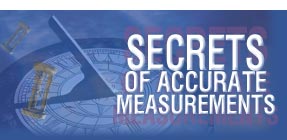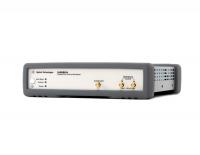 |
 |
 |
| RU |
|
Login
Newsletters
There is no newsletter category found. Information
|
Agilent Technologies Introduces Industry's First Reference Clock Multiplier for Receiver Test 04/25/2012 Agilent Technologies Inc. announced the industry's first reference clock multiplier. The Agilent N4880A reference clock multiplier enables R&D and test engineers to lock the pattern generator clock of the J-BERT N4903B and the ParBERT 81250A to reference clocks from the system under test. The new solution supports multiple reference clock rates ranging from 19 to 100 MHz for receiver test applications such as PCIe® 1.x, 2.x and 3.0 main boards, MIPI M-PHY devices and UHS-II host devices. The use of the reference clock multiplier significantly simplifies the receiver test setup, helping R&D and test teams to accurately characterize and verify standard compliance under easy to reproduce test conditions. With common reference clock architectures, where the host cannot run on an external reference clock, it is necessary to lock the generated stressed-pattern signal to the reference clock from the receiver under test. That's because the receiver under test also derives its sampling clock from this reference clock. Not locking the stressed pattern generator to the same reference clock would lead to wrong and non-reproducible jitter-tolerance test results. Some emerging and existing standards require this test topology: the PCI Express® rev 2.x and 3.0 CEM specifications from the PCI-SIG®, the MIPI M-PHY draft specification from the MIPI alliance, and the draft SD card specification for UHS-II host devices use a common reference clock architecture. In the past it was very cumbersome to reproduce such setups and it was not easy to reproduce stress conditions, especially when spread-spectrum clocking and low-frequency jitter components are present on the reference clock signal. Agilent's N4880A reference clock multiplier provides a multiplying phase locked loop (PLL), which enables users to lock the pattern generators of the J-BERT N4903B high-performance serial BERT and the ParBERT 81250A to such a reference clock. SSC and jitter are fed through the N4880A up to the PLL bandwidth. At its reference clock input, the N4880A supports multiple clock rates: 100 MHz for PCIe 1.x, 2.x and 3.0 CEM test; 19.2 to 52 MHz for MIPI M-PHY gear 1, 2 and 3 devices; and 26 to 52 MHz for UHS-II host devices. The bandwidth of the multiplying PLL automatically adapts. Users can control the settings of the N4880A from a stand-alone user interface running on a Windows PC via a USB connection. Benefits of the Agilent N4880A reference clock multiplier include:
"Agilent's new N4880A reference clock multiplier fills a critical need for R&D and test engineers who want to characterize and release the next generation of PCI Express main boards, MIPI M-PHY chipsets and UHS-II host devices," said Jurgen Beck, general manager of Agilent's Digital Photonic Test Division. "By adding our expertise in emulating stress signals and accurate receiver characterization, we again confirm our commitment to enable R&D teams to efficiently release robust, next-generation devices and boards for the server, mobile computing and storage industry." More information about the Agilent N4880A is available at www.agilent.com/find/n4880. Information about Agilent's PCIe 3.0 receiver test solutions is available at http://www.agilent.com/find/pcie_receiver_test. Information about Agilent's MIPI test solutions is available at www.agilent.com/find/mipi. Agilent's Digital Test Standards Program Agilent's solutions for digital applications are driven and supported by Agilent experts who are involved in various international standards committees. Experts from the Agilent Digital Test Standards Program are active in the Joint Electronic Devices Engineering Council, PCI-SIG, Video Electronics Standards Association, Serial ATA International Organization, Serial Attached SCSI (T10), USB-Implementers Forum, MIPI Alliance, Ethernet standards (IEEE 802.3), Optical Internetworking Forum and many others. Agilent's involvement in these standards groups and their related workshops, plugfests, and seminars enable the company to bring the right solutions to the market when its customers need them. Agilent Technologies Inc, www.agilent.com. Company profile: Keysight Technologies Related Information:
Companies' news
KIPiS articles
|
Current issue
Search
|
|
|
| © "Test & Measuring Instruments and Systems" ("KIPiS"), 2000-2024 |

























